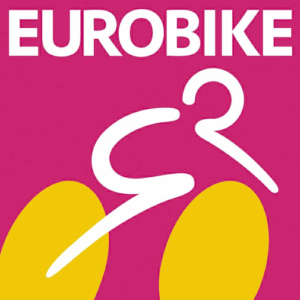Cycling apparel makers are heeding the demand for functional gear that is more sustainable, with the integration of greener fabrics as well as smart construction.
Shimano has applied the “less is more” concept to its Leggera performance bib shorts, which use the same fabric for the bibs and legs.
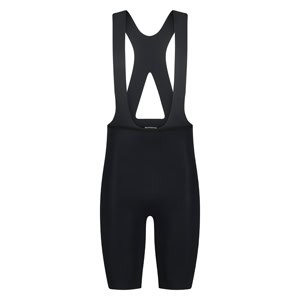
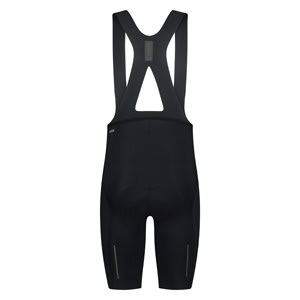
The concept was adopted after Shimano conducted lifecycle assessments on a few products last year, explained Katlijn Engelberts, product developer for apparel and accessories. It turned out that added fabrics, trims and zippers all had outsized environmental impact, due to extra production and shipping.
This led Shimano to simplify the garment and to use the same Renew Prime fabric for the bibs and legs. With bonded seams, the product has less bulk and no constriction. Another advantage is that it’s easier to recycle.
Engelberts said that Shimano went for a knit fabric, because weaving tends to require more energy. “We found a material that is very compressive but is also stretchable, so it’s still comfortable around the upper part and you can still layer it well,” she said.
Q36.5 has integrated fully recycled yarns in the Gregarius Pro bib shorts, for riders who want to go the distance. They are built with high-performance materials and the Italian brand’s proprietary pads.
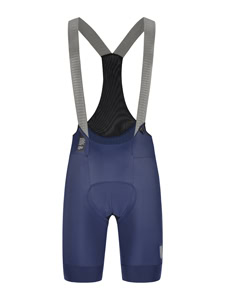
The bibs have few seams and panels, to reduce friction or pressure points.
With its Loamer all-mountain apparel range, Vaude is responding to younger riders who are eager to purchase more sustainable garments.
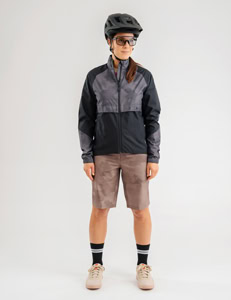
Loamer shirts are made from a single material, which makes them easier to recycle. They are part of the Rethink program developed by the German company for circular concepts.
At the same time, Vaude has given the Loamer range an on-trend appearance. The front of the shirts is cut a little higher, the back a little longer. The shorts use a lightweight, durable material as well as stylish touches such as “cloudy” color patterns.
Martin Reiniger, country sales manager at Vaude, explains that the brand’s commitment to greener garments has made it more popular among consumers. “That’s reason enough for us to rethink the collection in many ways, and to give it a fresh appearance,” he said.
Leatt has rebuilt its apparel range for women, both for trail and enduro. This entails all new constructions, not just new colours or designs.
The fabric of the trail jerseys has the look and feel of cotton. That makes them comfortable, and suitable to wear after the ride. At the same time, Leatt says the jerseys are highly breathable and moisture-wicking. The pants and shorts come with detachable, padded liners.
The women’s jerseys in Leatt’s enduro range integrate Iceyarn. Made with coffee grounds, this material is named after its “cooling” properties, and Leatt adds that it dries quickly.
The pants are robust but light, with a three-layer waterproof laminated seat panel. They come with cut-resistant panels, which Leatt describes as an aramid-like, dual weave constructed material. The pants and shorts have five zipped pockets.
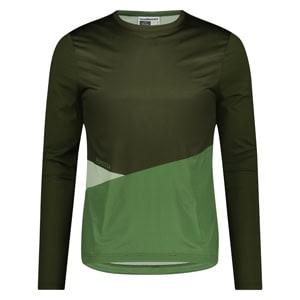
Shimano’s investments in sustainability have also influenced the construction of its off-road apparel. The seamless Evolve Terra jersey is intended for gravel riding, with a zipper in front.
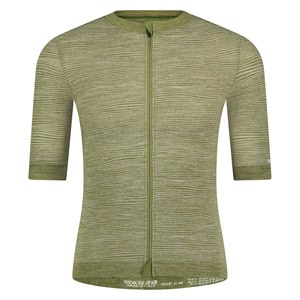
“It’s made with a whole garment knitting machine, which reduces its impact,” said Engelberts. “It also reduces waste, because it only uses the material you need.” Due to this technique, the jersey appears very small and tight, but Engelberts says it adapts to the wearer.
Shimano has started using Polygiene’s anti-microbial treatment for its Foresta mountain biking jersey, reducing the need for frequent washing. The Lana shirt addresses the demand for garments made from wool, which has its own anti-microbial functions.
Ultra Cool Tech [11.1/ B37] is taking cooling technology into the cycling wardrobe with its Cool Tech Vest. It’s a technical garment for competitive riders, helping them to cool down before races and providing cool relief afterwards.
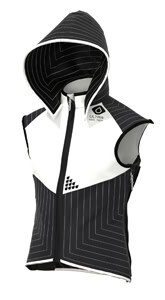
As the company explains, the vest is particularly useful for athletes when they have to warm up. The “pre-cooling” supposedly ensures that they don’t heat up too much.
The technical textiles in the vest can soak up large amounts of water and slowly release it. Ultra Cool Tech says the “evaporative cooling” is achieved by just adding water – no freezing or refrigeration is required.
Smart zippers on the side make it easy adjust the fit. The vest was created with internal mesh pockets and the option to use frozen cool packs. The hoodie provides extra cooling, and a shade to keep distractions at bay before the race.
When it comes to urban cycling gear, check out the latest safety garments from Go Fluo. Julie Vets, who created this Belgian company, set out to make high-vis clothing for cyclists more playful and attractive.
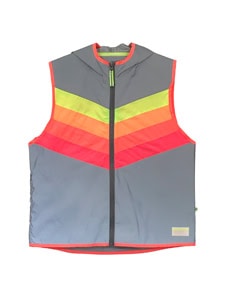
“I saw many people in the street wearing ugly yellow safety vests when they were cycling with their kids to school,” Vets recalls. “Why would everyone wear the same safety vest, which was actually designed to be in the back of your car?”
Since then, Go Fluo has been making garments that smartly integrate fluorescent and pastel colours, with trendy cuts and cute details. Vets adds that she changed the name of the product to Bodyglow, to give it a more attractive edge.
Go Fluo has spread to about 450 stores around Europe and North America, along with online sales. The brand has expanded into bags, which are displayed on an entire wall of its booth this year.
The latest move is an expansion into performance running apparel. Go Fluo is showing some samples as well as the latest cycling gear, using perforated fabrics.

